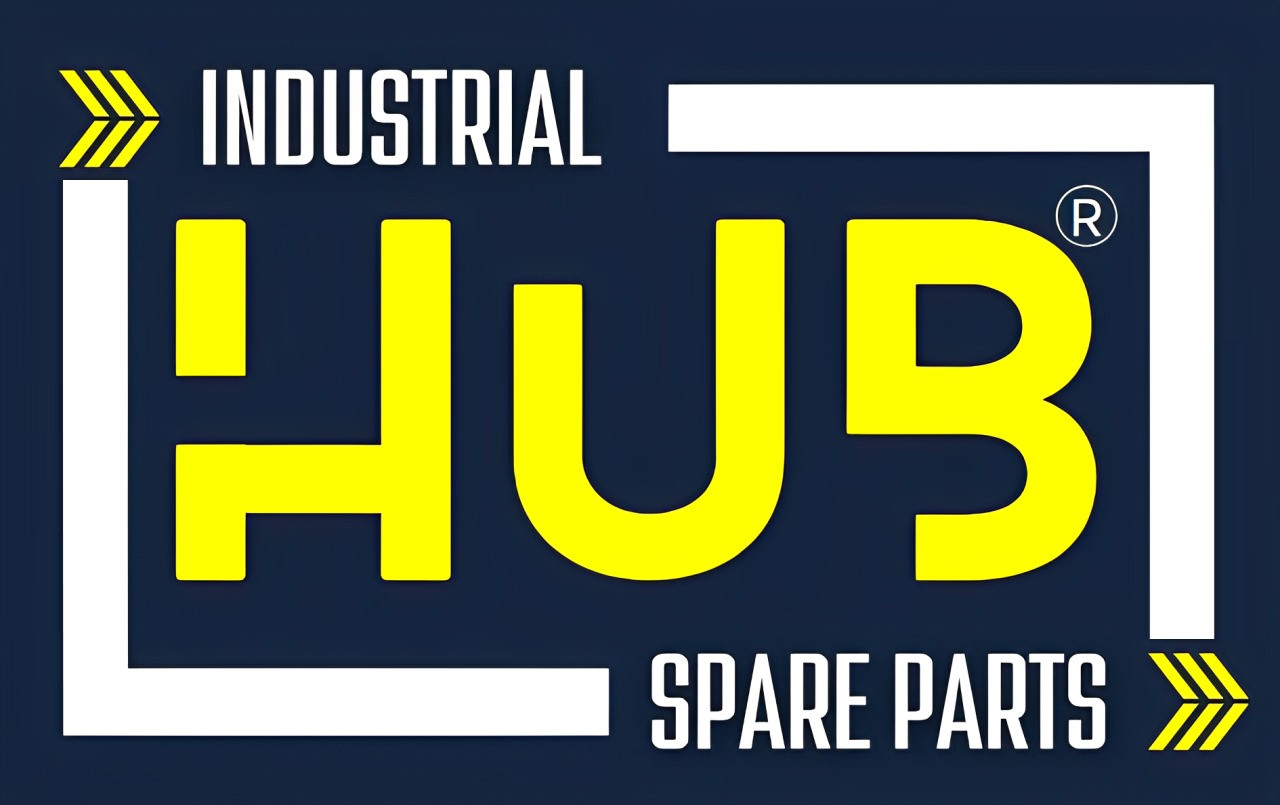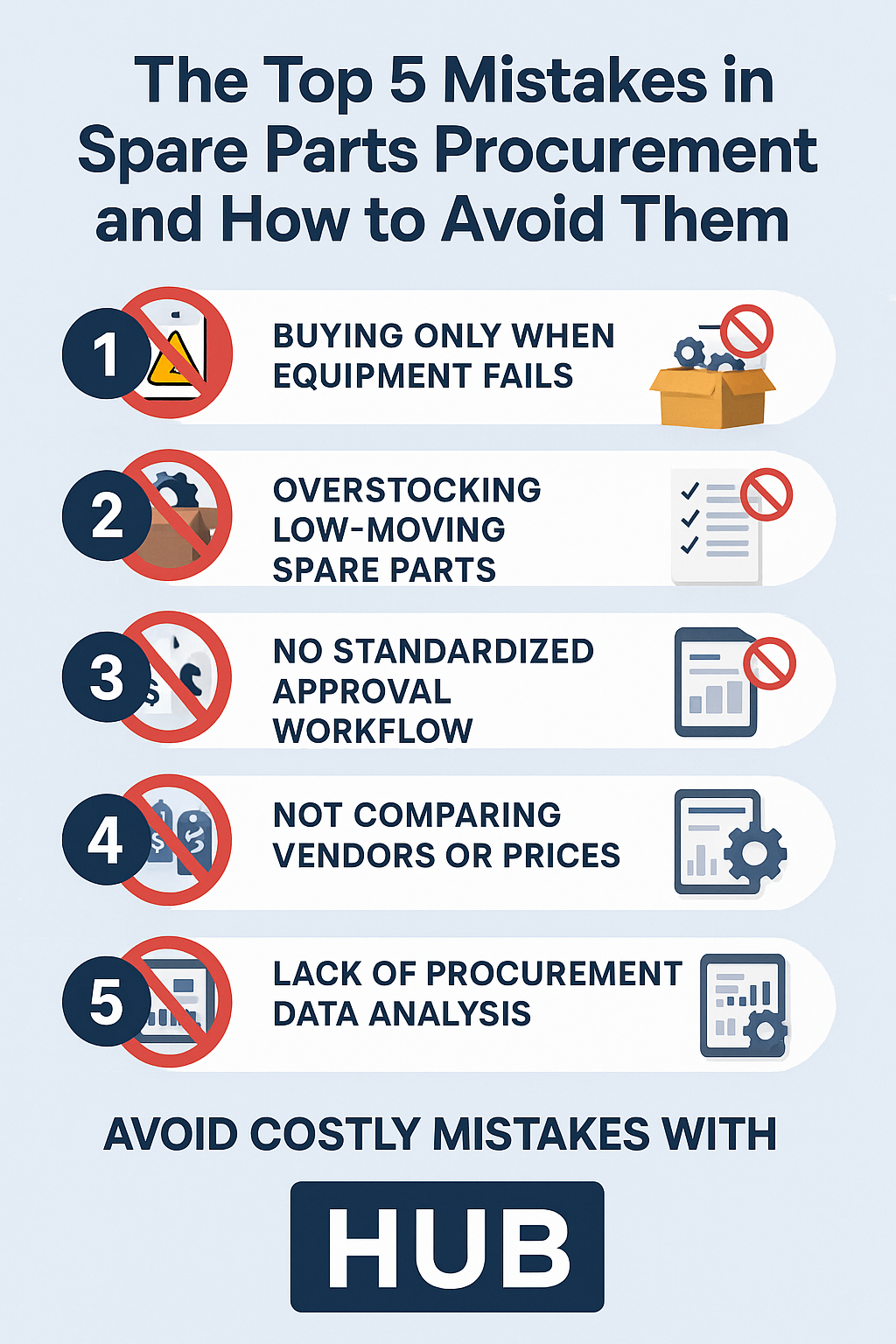No Item in Cart
The Top 5 Mistakes in Spare Parts Procurement and How to Avoid Them
Introduction
In the industrial world, spare parts procurement is often treated as a reactive process — leading to inflated costs, critical downtime, and misaligned inventory. Whether you’re managing a factory, overseeing a maintenance team, or handling purchasing, avoiding common procurement pitfalls is essential for operational efficiency.
At HUB Industrial Spare Parts Procurement Ecosystem, we’ve worked with dozens of engineering teams and purchasing departments. We’ve identified the most frequent errors — and designed solutions that eliminate them.
🛑 Mistake #1: Buying Only When Equipment Fails
The Problem:
Waiting until something breaks before ordering the part leads to emergency costs, shipping delays, and avoidable downtime.
The Solution:
Use predictive procurement. HUB analyzes historical usage and machine life cycles to recommend when to buy critical spares — before failure happens.
📦 Mistake #2: Overstocking Low-Moving Spare Parts
The Problem:
Procurement teams often stock excessive quantities of “just-in-case” parts, tying up capital and storage space in dead inventory.
The Solution:
HUB provides consumption-based planning tools and even offers a resale/exchange marketplace where companies can offload stagnant inventory to others who need it.
🧩 Mistake #3: No Standardized Approval Workflow
The Problem:
Without structured procurement workflows, decisions may bypass technical or budgetary checks — causing quality issues or misaligned purchases.
The Solution:
HUB enables a multi-tier approval process involving engineers, maintenance heads, procurement officers, and finance. This ensures right part, right reason, right budget.
📉 Mistake #4: Not Comparing Vendors or Prices
The Problem:
Many teams buy from the same vendors every time, missing out on better pricing, availability, or lead times.
The Solution:
HUB’s multi-vendor marketplace compares real-time pricing, delivery times, and product availability — across local and international brands — in one interface.
🔍 Mistake #5: Lack of Procurement Data Analysis
The Problem:
Without data, it’s impossible to see what parts are overused, underused, or where procurement budgets are leaking.
The Solution:
HUB offers detailed data dashboards and AI-driven insights, helping you optimize reorder points, supplier selection, and yearly procurement plans.
✅ Conclusion: Avoid Costly Mistakes with HUB
Avoiding these common errors can save your facility significant time and money — and improve production reliability. HUB is built specifically to solve these problems, with features that predict demand, streamline workflows, and optimize inventory and vendor selection.
🔗 Start using HUB now : www.HUBspareparts.com
🔗 Book a free demo or strategy call : WhatsApp Chat














